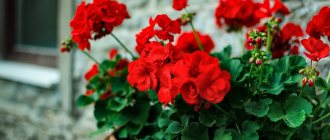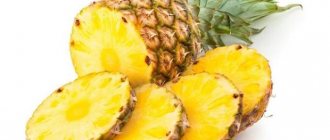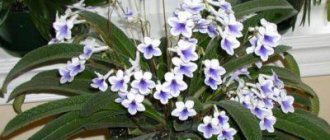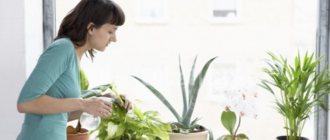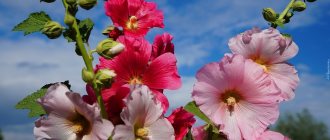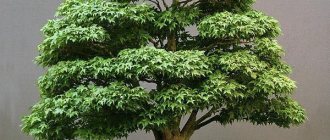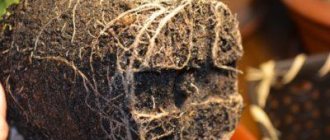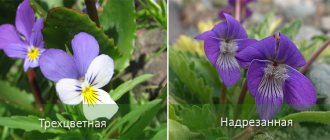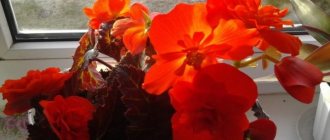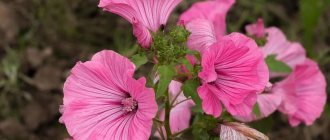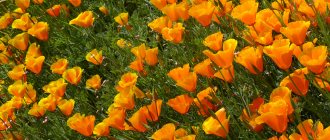Bonsai (translated from Japanese as “grown in a tray”) is a smaller copy of a tree grown at home or in a country house. The effect is achieved by regulating the size and shape of the plant's root system. It is not easy to grow a maple bonsai with your own hands; the process requires patience and time. But the end result fully lives up to expectations: a deciduous tree behaves like a full-fledged fellow tree; in the process of blossoming and withering, the leaf changes color and then falls off. The compact size of the dwarf plant allows it to be kept even in an apartment; taller individuals decorate verandas and garden plots.
Seed selection
It will take a lot of effort to grow a blue maple bonsai. But having received the azure miracle, everyone will forget about the time spent.
Selecting seeds of excellent quality is important. They are purchased in special flower shops, or you can order them online to China.
How to prepare seeds?
To grow a charming blue maple bonsai at home from seeds, you need to stratify them. Under natural conditions, maples emit seeds in the fall; they go through the same process in 120 days.
At home you will need to:
Stage I. Cold stratification – seed ripening. They are left in warm water, then they must be stored in the refrigerator or freezer. This is an imitation of temperature changes. And refrigerators and freezers in Almaty can be purchased in the TOP TECHNO online store.
Stage II. Warm stratification for maple seeds is an “awakening”. To do this, they are kept in moisture (substrate or soft tissue) for several days, always at +30-35o C.
For maple, a combined method is used, where the seeds are first kept in a cold place, and before planting, they are dipped in warm water.
Important! Be sure to disinfect the seeds with a mixture of weak potassium permanganate for up to 15 minutes. to prevent the occurrence of fungi.
Soil preparation
To grow Japanese maple, it is important to choose the right container and prepare the soil.
Substrate called Akagama (natural soil in the 1st prefecture of Japan). Composition: humus, coarse sand and alumina (1x1x1).
This substrate for barefoot maple:
- excellent moisture retention;
- light and loose for free access of air, as well as protection of roots from rotting;
- the soil must have sufficient nutrition.
For blue maple (and deciduous plants) it is better to prepare: sand in combination with turf (3x7).
- coarse sand from the river;
- clean the soil by sifting through a coarse sieve;
- the resulting mixture is disinfected - treated thermally: it can be heated in a frying pan (water bath). You can freeze the substrate and then thaw it, this is also an excellent disinfection. Then be sure to dry the soil well and pass it through a sieve once.
Advice! You can disinfect the soil with biological products “Barrier” or “Fitosporin”; they will destroy possible eggs of various insects or fungal spores.
- Plot near a pond: nuances of choice
- Which fast-growing shrubs are suitable for green fences?
- Juniper stricta - description, cultivation, planting and care. Secrets of garden maintenance and application in landscape design (130 photos and videos)
The disinfected soil is fertilized. Seeds are planted in a shallow (up to 5 cm) and wide container with 3-4 drainage holes.
Before use, wash the container well with a non-aggressive agent. It is better to scald with boiling water to destroy fungal spores and dangerous bacteria, then let it dry.
Types of maples for growing bonsai: features
There is nothing surprising about these trees for the inhabitants of our hemisphere. They grow in park areas, forests, on roadsides and in front gardens. In the bustle of everyday life, people rarely pay attention to its beautiful carved leaves. And also to the richest palette of colors that replace each other in the autumn. Lovers of ancient art have chosen several types of maples that are most suitable for growing miniature trees.
All of them captivate with the color of their foliage:
- blue,
- blue,
- red,
- ordinary, or sycamore, holly,
- shishigashir,
- Japanese.
In their homeland, bonsai, thanks to the variety of leaf colors, create entire compositions that delight the eye all year round. The types of maples whose foliage has an unusual rich color are valued not only in autumn, but in other seasons. And also constantly changes shades.
Ordinary
The common maple, or sycamore, is widespread in Russia and North America. It is unpretentious and takes root and reproduces well in natural conditions. In the north it often grows as a shrub.
There are many varieties of this maple, very beautiful:
- Royal Red with wrinkled leaf blades stands bright red all summer,
- Acer platanoidesvar with leaves that, already blooming, are strikingly purple, and then gradually change color to green. The shoots are also colored red,
- Crimson King has dark, almost black leaves,
- Globosa is valued for its natural spherical shape and very slow growth,
- Drummondii turns pinkish when the leaves open, and then pleases the eye with an unusually variegated color due to the white border on the leaves,
- Red Emperor changes from bright red to pink,
- Laciniatum has very carved leaves,
- Columnare is a low, columnar tree, its branches create an openwork ligature, and its flowers exude a bright fruity aroma,
- Princeton Gold is unusual for the yellow color of the foliage, bright when blooming, and then becoming delicate, almost transparent.
They have learned to grow bonsai from almost every subspecies of maple, but this is by no means easy.
Blue
Maple varieties whose leaves have a rich blue color have been bred by breeders and cultivated for growing bonsai. When purchasing seeds of such a maple, you can easily be deceived. In nature, these dwarf trees with soft blue foliage are found only in Japan.
Look great:
- palm-shaped small-leaved Shaina and Dissectum Garnet,
- holly Crimson King and Crimson Sentry.
Important! Blue maples are very rare, and this is what unscrupulous seed sellers take advantage of.
Attempts to grow trees from them are often fruitless. Even a 3-4 year old bonsai purchased in a store can turn blue only due to special feeding and watering with chemicals.
Blue
No less rare are maple bonsai, the leaves of which are colored azure. But they can become a real decoration of any collection.
The color intensity of these varieties varies from the deep blue color of the foliage of the lower tiers to silver and light blue. The main specific characteristics of these varieties are:
- Openwork crown, tent-like, slightly drooping.
- The bark is light gray.
- The young shoots are interesting because of their red color.
- The leaves are two-colored - white above and bluish below.
- By autumn, the color becomes less intense, gradually turning into true blue.
Such trees require especially careful care. After all, any fluctuation in temperature and lighting can cause an “unscheduled” change in foliage color.
Red
The favorite of bonsai connoisseurs is the red maple. This is where the largest variety of shades from pink to purple is. It is these that tourists from all over the world come to Japan to admire in the autumn. This bonsai will delight its owners all year round, constantly changing shades.
And also amazing during the flowering period.
- Pyramidal October Glory has bright, shiny green foliage that turns deep pink when the light intensity decreases.
- Brandywine is notable for the fact that, having changed its color to bright red, it does not fly around for a very long time, shining like a light on the windowsill.
- Slow-growing Sun Valley is charming with purple, shiny foliage and scarlet inflorescences.
- The dwarf palmolia, with fan-shaped leaves, glows red in summer. And closer to autumn it changes color to crimson, rich purple.
Peculiarity! There are more than 200 varieties of bonsai with red foliage.
Even in a tree that has completely lost its leaves, connoisseurs find their charm. Different shades of bark, knotty or even stems, the finest ligature of branches gaining strength before a new flowering is a real gift for philosophers and contemplators.
Shishigashira
This species is well known for its extremely slow growth. A tree from it takes decades to form. The palm-shaped leaves are strongly curled and green. In autumn they change color to pale yellow, then bright yellow, carmine, red and crimson. In the first years of its life, maple looks very stunted, so it is rarely seen on sale.
But after a few years:
- abundant branching forms a luxurious crown,
- compact dense foliage easily allows you to create several layers of tiers,
- gold color alternates with red, orange and purple,
- decorative foliage in jagged edges and a deep depression near the central vein.
Interesting! Shishigashira literally means "lion's head". The resemblance of this maple to the majestic animal at its most beautiful time is striking.
There are many legends associated with shishigara; the Japanese are especially sensitive to this type of maple. A bonsai made from it in the house is considered a symbol of happiness.
Japanese
In the homeland of bonsai, maples can be admired endlessly. They grow freely on mountain slopes, in parks, and are cultivated in miniature gardens and in homes. Species with small foliage and good branching are especially valued. The internodes of maples should be short. This allows you to give the plant any shape.
Japanese maple leaves can be:
- palm-shaped, resembling a human palm,
- very finely dissected, similar to pine needles, with variegated colors,
- completely cut,
- almost not dissected, like Aureum, carved, large.
Important! It is Japanese maples in all their diversity that are most common among bonsai lovers today. But they are also the most whimsical, requiring constant human attention.
How to plant seeds?
Place a fine mesh at the bottom of the prepared container so that the soil does not spill out. We fill it with a large substrate, then with a small one. Leave about 3 cm to the top edges.
Place blue maple seeds on the soil at a distance of 1 cm. Each seed needs to be slightly pressed down with a round wooden board, sprinkled with a thin layer of sand or soil on top, and compacted.
Then the soil needs to be watered a little. Cover the container with transparent glass (film), place it in partial shade, and wait for the first shoots to appear.
- How to grow a plum from a seed: tips and tricks on how to prepare the soil, prepare fertilizers and grow plums at home (155 photos + video)
- Do-it-yourself columnar foundation for a gazebo: instructions, diagrams, calculations
- How to choose the right fruit trees and shrubs for planting
It is necessary to maintain soil moisture, as well as a temperature of +15o C (not lower).
With the appearance of sprouts, you need to move the glass, if there is a film, cut small holes for oxygen to enter.
Description
The genus Acer unites woody and shrubby plants of the Sapindaceae family. Widely represented in Europe, North America and Asia. The genus includes more than one hundred and fifty species, which mainly grow in the temperate zone; some of its representatives are found in Central Asia and the Mediterranean.
The tree grows up to thirty meters in height. The trunk is covered with gray-green bark with a network of lighter veins. The leaves are large, three-lobed, up to seventeen centimeters long. The edge of the leaf blade is finely toothed. The flowers are small and greenish in color. They have five oblong sepals and the same number of oval petals. There are eight pubescent stamens. The ovary is short and in male flowers underdeveloped. The peduncle is thin, about five millimeters long.
Caring for Blue Maple
The sprouts will do well in partial shade. Fertilize the soil once a month.
- Do-it-yourself disassembly of the Grundfos pump
- Where and from whom is it better to buy seedlings?
- Cherry cherry: 100 photos, description of the variety, features of planting and cultivation. Care, planting and replanting of cherries
When they reach 10 cm, they need to be replanted separately. Bonsai containers are best made of ceramics.
The shape of the container depends on the style of bonsai:
- the cascading crown requires a tall and narrow pot;
- sloped crown – wide for good stability;
- dense crown – flat;
- small bonsai height – deep, compact.
Important! The main requirement in a bonsai container is stability.
The color of the cookware is better than calm tones to highlight the brightness of the maple.
To the store
We will bring you the most unique and amazingly beautiful trees that you will find in a store or nursery.
- "Aconitifolium"
. From spring to late summer the foliage is bright green. In autumn, the shade of the tree is yellow-orange. The shape of the leaves resembles deep lobes. - "Aureum"
. This is a variety of finger maple. The crown has a bright yellow tint. The shape of the leaves resembles finely cut lobes. Among these representatives there are trees with colored bark. - "Atropurpurreum"
. The leaf shape is the same as the previous variety. Preferably differs from all other types in its color scheme. Throughout the season, the crown changes from bright red to black-purple. - "Dissectum"
. The leaves have a semicircular, flattened shape. Their color is most often a red-purple hue.
The varieties of ornamental trees do not end there. You can choose a plant according to your taste preferences, which will harmoniously fit into the landscape of your garden plot.
Watering
High humidity at low temperatures can lead to fungal diseases.
A small container will distort the plant's roots.
Abundant watering, preferably from a kettle. You can immerse the pot in a wide container of water for a short time.
Rainwater for irrigation is desirable. You can use flow-through, but let it sit for 2 days.
Top dressing
Feeding is needed once every 20 days:
- with nitrogen for good growth;
- with phosphorus for root development, increased immunity, and bud formation;
- with potassium to protect against pests.
The plant needs iron to feed it, so a clay substrate is ideal. In the room, the maple tree needs to be fertilized all year round.
Crown formation
When the seedling is 2-3 months old, the central root should be shortened by 2/3.
Form the bonsai crown by pruning all year round. Small or weak branches can be pruned at any time. It is better to trim thick branches only in autumn. This will reduce the growth of the bonsai.
In spring, the movement of juices inside the tree begins. Before the onset of winter, the shoot must be cut to the nearest branch.
Sections must be treated for infections. Only in the 4th year, unnecessary branches are pruned to form the crown.
Replant blue maple every year in the spring, changing the soil and container. Be sure to trim the roots and remove damaged ones.
By following these rules, everyone can grow a Japanese maple of extraordinary blue at home. A miniature maple bonsai will become the pride and decoration of any home.
Landing
The procedure is simple, but requires special knowledge. Planting a Japanese maple requires the necessary materials. To do this, prepare:
- tree seedlings;
- compost;
- peat.
Landing is carried out according to the following algorithm:
- Dig a hole. It should be twice as deep and wide as the root of the tree.
- If you bought a ready-made cutting of a plant, then free it from the pot. Unravel the roots and loosen the soil before planting.
- Add pre-prepared compost and peat to the hole.
- Bury the plant.
- Make a hole around the bush that is required for convenient watering.
- Moisten the tree thoroughly so that the roots quickly take root in the new soil.
- The following spring, after planting, add a layer of mulch under the tree. It should consist of soil with rotten leaves.
- If the summer is too hot, the bush will need to be watered more often.
In order for the plant to take root well and quickly, you need to prepare the right place.

